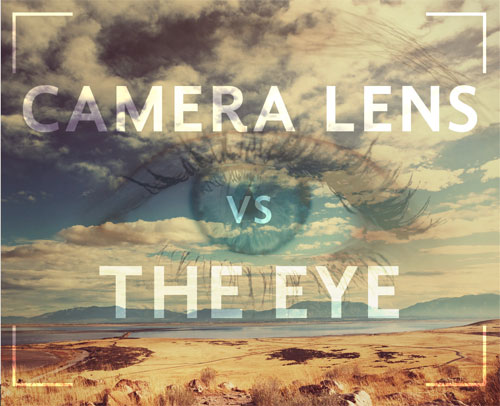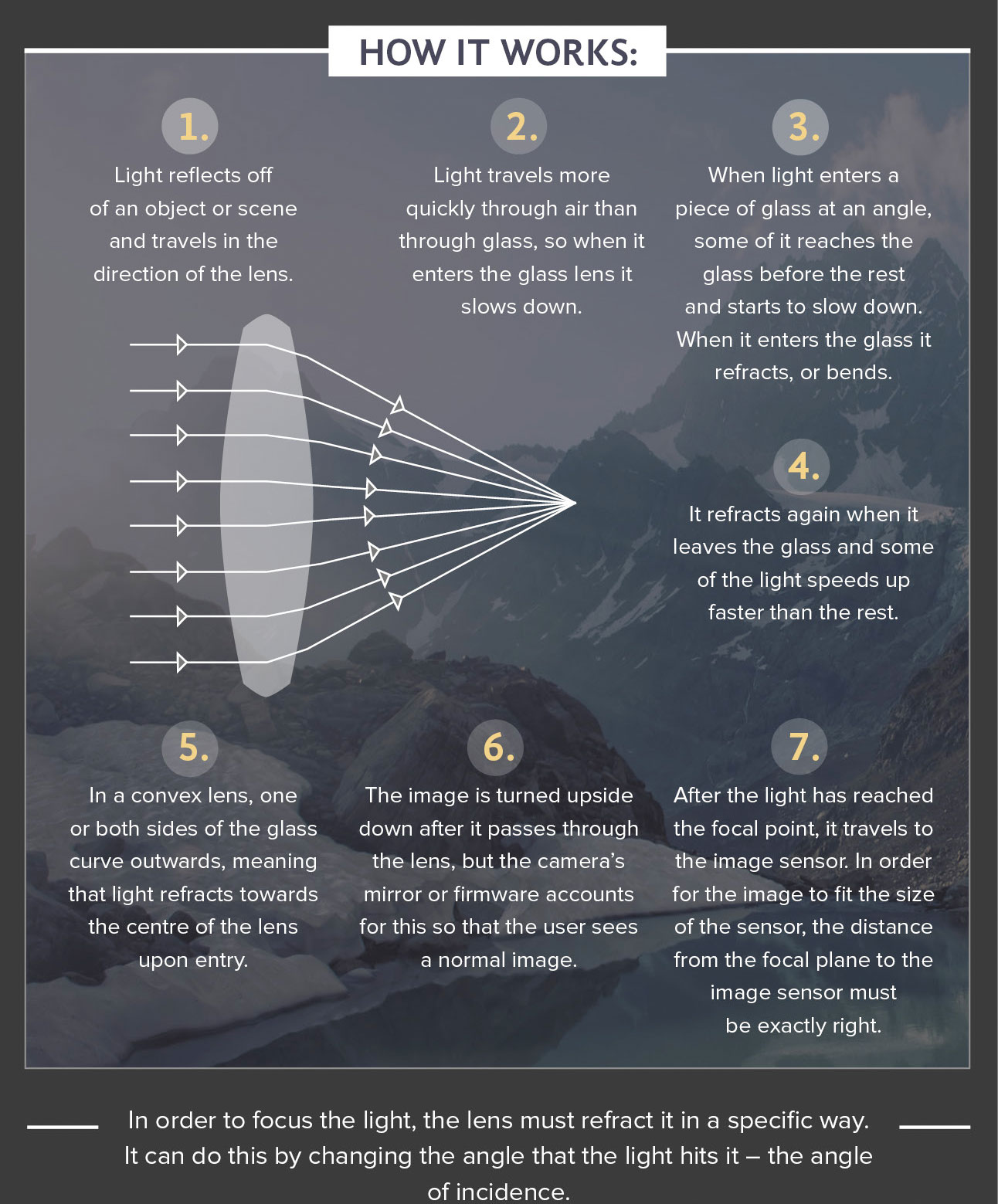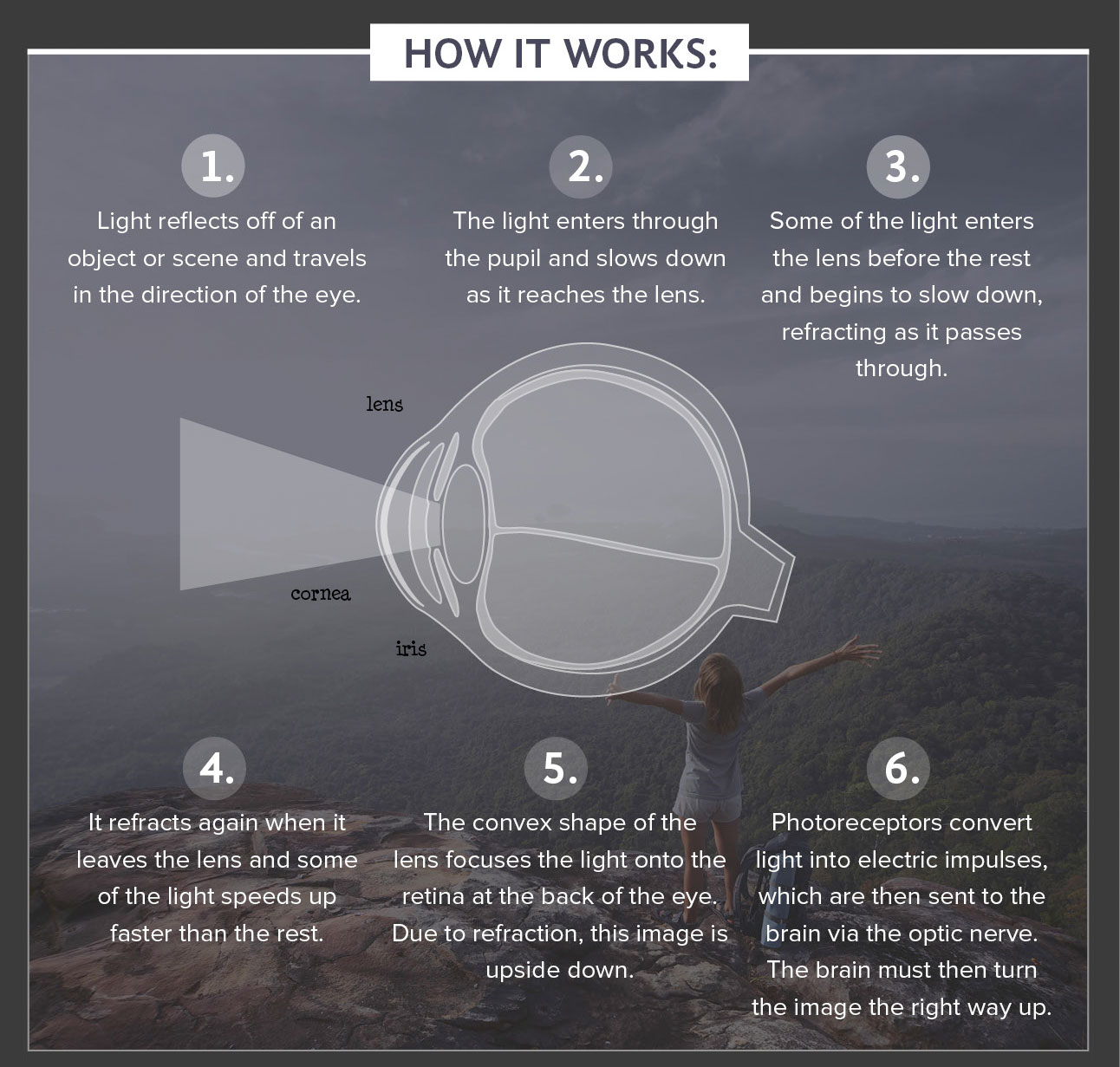There are many similarities between a camera lens and the human eye. Of course, they both have distinct features too.
Join us as we take a look at the makeup of each, their way of functioning and what makes them unique.
THE CAMERA LENSDesignA collection of small glass parts make up a camera lens and are used to focus light onto a light-sensitive surface.
There is also an adjustable hole on the lens called the aperture, which controls just how much light can enter the lens at any one time.
All camera lenses are curved. This is to take into account light at different angles - after all, light must be directed to the camera's focal point to capture an image.
TypesThere are many different types of camera lens, ranging from simple designs to the more complex options:
• A single-element convex lens is the simplest form of a camera lens. It is designed to be thick in the middle and tapered along the ends. You can find a similar setup in a magnifying glass.
• A normal lens benefits from having a wider angle of view but items in the distance are not capable of being magnified.
• A wide-angle lens is great when you want to achieve a distorted, bulging effect with your photos. This is because the lens is more curved and its focal length is shorter - two elements that results in a greater angle of incidence.
• A telephoto lens is designed with a longer distance from the front of the lens to the focal plane and from the focal plane to the image sensor. Increased lengths mean that elements off in the distance can be focused on more accurately.
• A zoom lens comes with a zoom ring, which can be used to change focal length and the overall configuration of a lens' elements. The result is great magnification capabilities.
How the camera lens worksThis graphic by Clifton Cameras provides an easy-to-follow guide of how a camera lens works:
THE HUMAN EYEA good way to look at the human eye is to split up its elements.
The pupilA hole positioned at the front of the eyeball which enables light to enter.
The irisThe coloured portion of the eyeball. This helps to control how much light can enter - similar to the aperture on a camera lens.
The wallsThe walls of the eye are split into a trio of distinct layers - the coloured iris, the internal retina and the white sclera.
The retinaA surface at the back of the eye where light is focussed onto. The retina will detect the light and then direct messages to the brain for a response.
PhotoreceptorsThere are more than one million light-sensitive cells in a single human eye: these are split into two designs. Rod photoreceptors allow the eye to see in areas of low light, while cone photoreceptors are for times when light is bright. Cone photoreceptors also enable human eyes to distinguish colours.
How the human eye works
Clifton Cameras has also provided a step-by-step guide to how all of the elements of a human eye work together:



